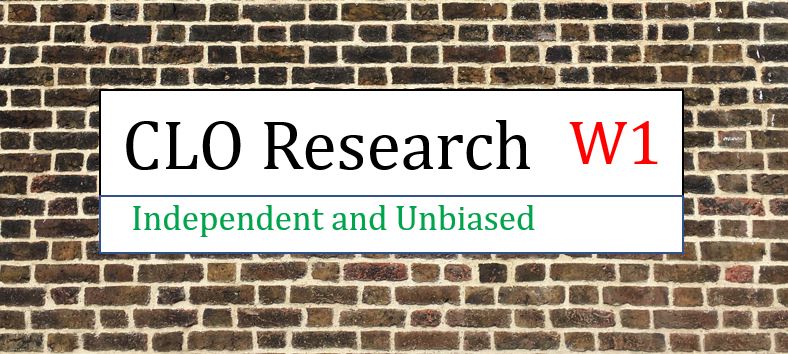US CLO Deals with Failing ID/OC Test(s)
Please see the table below for the latest list of US CLO deals (post-2012) with failing ID/OC test(s). Quite a number of these deals would see rated debt impairment eventually.
CLO Research provides independent research and insights on CLOs, offering investors and managers fresh, unbiased perspectives to support their decision-making.
If you’re an ***investor*** in the CLO market, we invite you to register with us using your business email address to gain complimentary access to our freemium content.
If you’re interested in learning more about the premium content or would like a walkthrough of the website via Zoom, please don’t hesitate to email info@clopremium.co.uk.
Please see the table below for the latest list of US CLO deals (post-2012) with failing ID/OC test(s). Quite a number of these deals would see rated debt impairment eventually.
The tables below show the median MVOC (AAA-B) and EQ NAV of US BSL CLO and EU CLO deals* by...
“Generally speaking, deals with a bigger below 80 price bucket would tend to see their equity and lower mezz tranches get hit harder from a valuation standpoint.”
MVOC metrics fell dramatically across capital structure through 2022.
Please find the table below for the CLO collateral exposure by industry (Moody's classification) based on EU CLO deals closed in 2021–2022. The median EU CLO deal has an 15.8% exposure to Healthcare & Pharmaceuticals.
Based on deals that have been fully redeemed so far, a final NAV of over 50% is typically desired to deliver at least a high-single IRR number for CLO equity investors. Of course, annual distributions need to hit around 15-16% for about five years for a regular arbitrage CLO deal.
A slower prepayment rate would lead to a longer duration of the debt tranches. If the MVOC is also low, then debt investors might see higher price volatility. On the other hand, a slow prepayment rate would bode well for CLO equity valuation in general.
How quickly is CLO rated debt paid down post reinvestment end date?
Given that the US loan market is a lot bigger and diversified, the CLO overlap risk (between managers) is lower for US CLOs. It is apparent that the similar median EU CLO equity NAV across vintages can also be partially explained by the relatively higher reset level of older deals in Europe. Not many seasoned EU CLO deals have been fully redeemed. Also, many older vintage deals have been reinvesting for much longer than suggested by their reinvestment periods.
It is not a surprise that a better-annualised par build number does not necessarily translate to better investment performance. As shown in the graph, EU CLO managers with very similar levels of annualised par build metrics actually see very different MV return alpha performance.
Over US$220 bn of US CLOs would potentially become static if the reset market is not open for business over the next year.
As of 31 Oct 2022, the total size of the EU CLO market stood at around €200.3 billion.
Primary and secondary market participants focus a lot on this number – a point in time metric – as it is an important metric for pricing CLO-rated tranches. Put another way, CLO-rated tranches do trade on the back of the loan market.
Managers can build par by buying a loan at a discount at say 85c and have it treated at par for the calculation of OC ratios. On the other hand, managers can also burn lots of par by trading out of more distressed credits.
Please see the table for the list of 50 largest global CLO managers and their CLO AUM breakdown by US and EU CLO AUM as of 30 Sep 2022.
